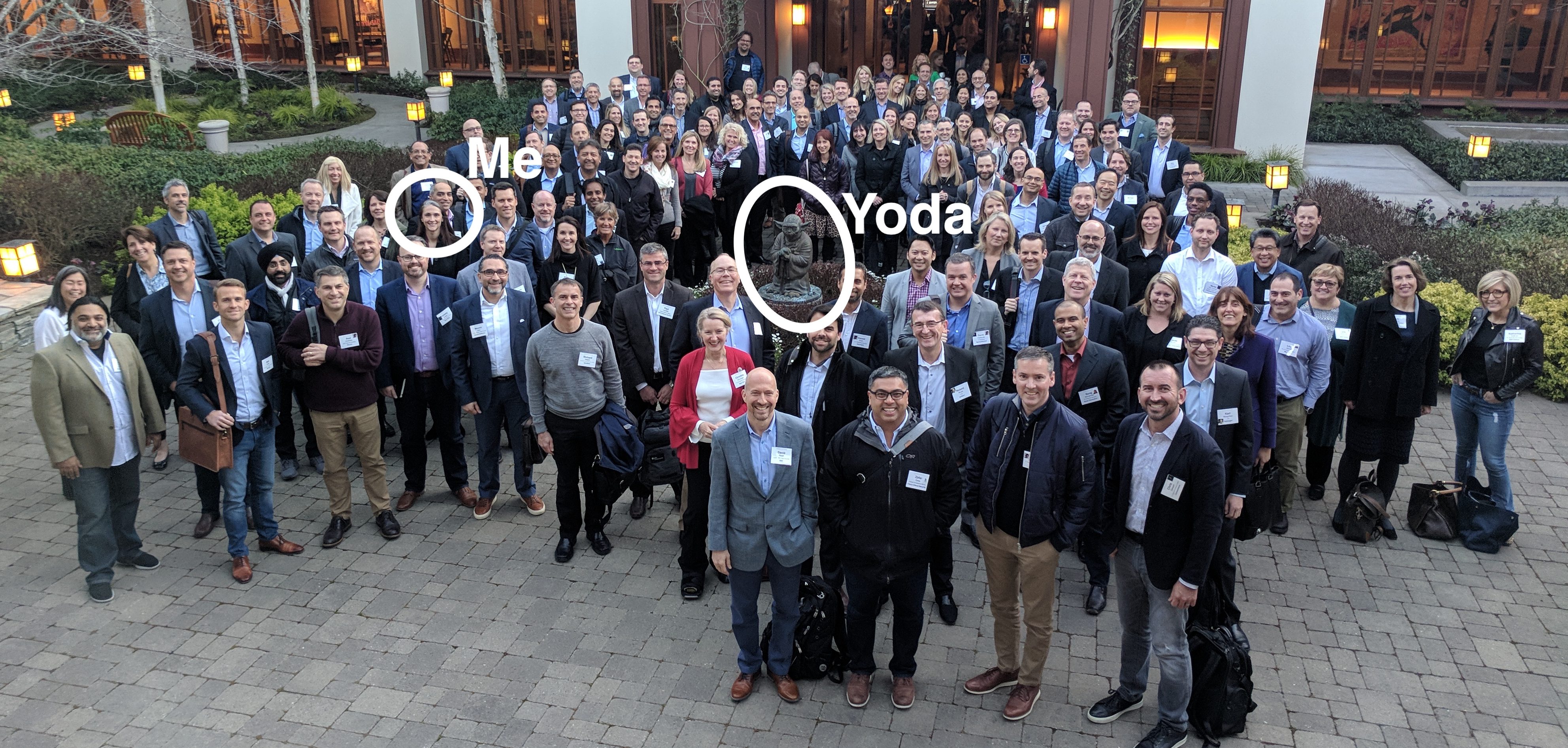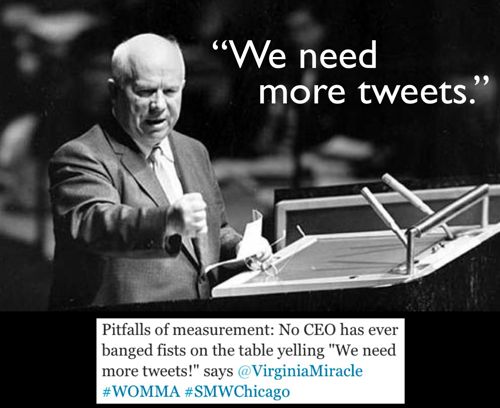A Community Of Practice: Growth at Light Speed

My name is Virginia Miracle and I am a Customer Success practitioner (hi, Virginia). This is not what it says in my bio, but I think it just might be the truth.
Last week was a long, revelatory, and inspiring. I spent time in beautiful surroundings and part of two different Communities of Practice – the first was the Gainsight Chief Customer Officer Summit (hosted at the secretive Skywalker Ranch, hence Yoda) and the second was serving as a speaker at a customer’s internal social media summit. Despite the awesome work that Gainsight does on forwarding customer success as a practice, I am not sure that I would have self-identified on a reptilian level as part of the “Customer Success Community” prior to last week. I’ve spent basically all of my career as a marketer, I serve marketers and heck it wasn’t that long ago that I was honored to be part of TopRank Marketing’s 25 Women Who Rocked Digital Marketing in 2017. Walks like a duck…But then there’s this whole Customer Success gig I seem to have. The 6+ years of on the job lessons from building Spredfast’s Customer Success methodology and team appear to have armed me with both much to give and to learn. I found it very inspiring to engaging in debate and sharing with fellow CS leaders who served customers as diverse as procurement and pastors.
The second part of the week was at a customer’s internal social media event which brought together geographically disparate social teams for 2 days of training and best practice sharing. The way the logistics worked, I was able to attend all day and visibly see the crackle between the attendees in the same way I had felt that myself at Gainsight event. They all walked away feeling closer to colleagues and committed to sharing more on their best practices calls.
3 takeaways from a remarkable week in these 2 special communities:
Prescriptive Practice is not the enemy of Artistry – Embracing playbooks, automation, and other technology tools to deal with the repetitive or high frequency motions frees up your limited human resources to do the things that defy playbooks and repetitive motions. This is true for everything from social care inquiries to troubleshooting docs to thanking promoters. Being prescriptive creates room for grace and learning.
We Can Learn Faster Together – No one and I mean no one at the CCO summit had everything figured out. Given how quickly the space moves, that would be nearly impossible. But I have no doubt that the number of ideas, frameworks and new practitioner colleagues I walked away with will help me optimize solutions far faster than if I was in this alone. The same goes for the large customer team I was with at the end of the week. The comfort of all being in this together, still learning, and that being OK is powerful stuff.
Connecting in Real Life Sparks Meaningful Digital Sharing – Connections that were made in both of these forums that will no doubt be taken forward with gusto and bear meaningful acceleration. And what better time to remember than 4 days before SX kicks off! Building and maintaining meaningful connections to our loose tie Frolleagues (<- see what I did there) is an investment in the braintrust that can grow our smarts ahead of the pace of market change. And is well worth the investment of the upcoming weekend…


